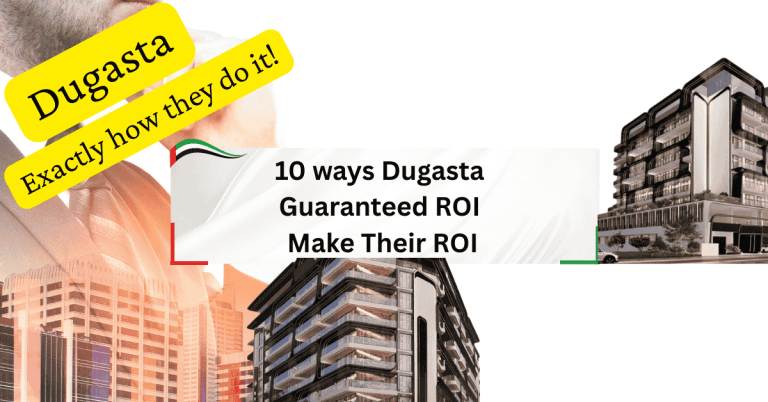Investment Demand Curve 101: All you need to know
Table of Contents
Introduction
Investment is very important. It helps people and the economy. The investment demand curve shows how much people or businesses invest. It depends on interest rates. When rates are low, more people invest. When rates are high, fewer people invest. This article explains it all. We will keep it very simple. Let’s begin.
What is The Investment Demand Curve?
The investment demand curve is a graph. It shows how much people invest. It also shows how interest rates affect this. When interest rates go down, people borrow more leading to them investing more. When interest rates go up, people borrow less. This means people invest less.
The curve goes down as interest rates go up. Knowing this helps businesses make smart decisions. It also helps them plan for the future.

Determinants of Investment
Many things affect investment. These things are called determinants of investment. Let’s look at the most important ones.
Interest Rates
Interest rates are very important. They decide how much it costs to borrow money. When interest rates are low, it is cheap to borrow money. Businesses can get loans. They use loans to buy machines. They build new buildings. This helps businesses grow.
When interest rates are high, it is expensive to borrow money. Businesses get fewer loans. They will not invest as much. This is why interest rates matter.
Expected Returns
Expected returns are how much profit a business thinks it will make. If a business thinks it will make a lot of money, it will invest more. If a business thinks it will not make much money, it will invest less.
For example, if a company expects to sell many products, it will invest in factories. If they expect low sales, they will not invest. Expected returns are very important.
Business Confidence
Business confidence is how businesses feel about the future. If businesses think the economy will do well, they will invest more. If they think the economy will do badly, they will invest less.
For example, if businesses see that people are spending money, they will invest. If they see that people are not spending money, they will not invest. When businesses are confident, they take more risks. When they are not confident, they take fewer risks.
Technology and Innovation
Technology makes businesses better. It helps them work faster. It helps them make new products. When new technology comes out, businesses invest in it. It helps them stay ahead of others.
For example, if a new machine is invented, a business might buy it. The machine might help them make things faster. This means they can sell more. Technology makes investment more likely.
Why is the Investment Demand Curve Downward Sloping?
The investment demand curve goes down because of interest rates.
When interest rates go down, borrowing money becomes cheaper. This means businesses and people get loans easily. They invest more.
When interest rates go up, borrowing money becomes more expensive. Businesses and people do not want loans. They will invest less.
This is why the curve goes down. Low interest rates lead to more investment. High interest rates lead to less investment.
What Shifts the Investment Demand Curve?
The investment demand curve can move. It can shift to the right or left. Different things cause this shift. Let’s look at what shifts the curve.
Rightward Shifts
A rightward shift means businesses want to invest more. This can happen for many reasons.
- Technology: New technology makes businesses want to invest more. They need to buy new machines. This shifts the curve to the right.
- Confidence: When businesses feel good about the future, they invest more. This shifts the curve to the right.
- Government Help: If the government gives tax breaks, businesses invest more. This can shift the curve to the right.
Leftward Shifts
A leftward shift means businesses want to invest less. This can happen for many reasons.
- Bad Economy: If the economy is bad, businesses invest less. This shifts the curve to the left.
- Higher Taxes: If taxes go up, businesses invest less. This shifts the curve to the left.
- Low Confidence: If businesses do not feel confident, they invest less. This shifts the curve to the left.
Factors Affecting Investment Demand
Some big things affect investment demand. These things change how businesses invest. Let’s look at these factors.
Economic Growth
When the economy grows, businesses invest more. People have more money to spend. This makes businesses want to make more products. When the economy is strong, businesses feel safe investing.
Government Policies
The government can change investment by making new rules. If the government gives tax breaks, businesses invest more. If the government raises taxes, businesses invest less.
For example, if the government lowers taxes on new machines, businesses buy more machines. If the government raises taxes, businesses might not invest.
Taxes and Subsidies
Taxes and subsidies matter a lot for investment. If the government gives subsidies, businesses invest more. If taxes go up, businesses have less money to invest.
For example, if a business gets a tax break, it might buy new equipment. But if it has to pay more taxes, it will invest less.
Conclusion: Simple Tips for Investors
Investment is very important. Helps businesses grow and people getting jobs. It helps the economy stay strong.
There are many things that affect investment. Interest rates are very important. So is business confidence. When businesses feel good about the future, they invest more. When they feel bad about the future, they invest less.
Investors should watch interest rates closely. They should also look at the economy. If the economy is doing well, it might be a good time to invest. If the economy is not doing well, it might be better to wait.
Stay informed. Watch government policies. Watch how technology changes. These things can affect investment too.
Investing can grow your money. But make smart choices. Stay confident, but be careful. Make sure to invest in things that have a good chance of making money.
By understanding the investment demand curve and the determinants of investment, you can make better choices.
Read Also:
- Investment Analyst Salaries: Which Country is The Best?
- The Shocking Total Assets of the Nahyan Family
- Dubai Police Cars: A Fleet The World Has Never Seen Before
- Determinants of Investment
Common Questions About Investment Demand
Why is the investment demand curve downward sloping?
The investment demand curve goes down because of interest rates. When interest rates go down, people and businesses invest more. When interest rates go up, people and businesses invest less.
What shifts the investment demand curve to the right?
A rightward shift happens when businesses invest more. This can be because of new technology, high business confidence, or government help like tax breaks.
What shifts the investment demand curve to the left?
A leftward shift happens when businesses invest less. This can be because of a bad economy, high taxes, or low business confidence.
What does the investment demand curve show?
The investment demand curve shows how much people and businesses invest. It also shows how interest rates affect this investment.









